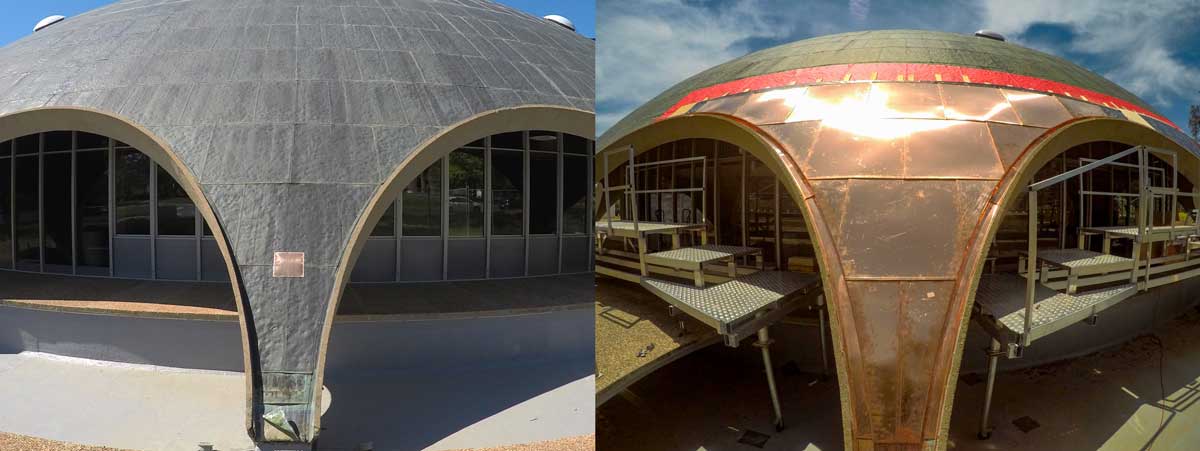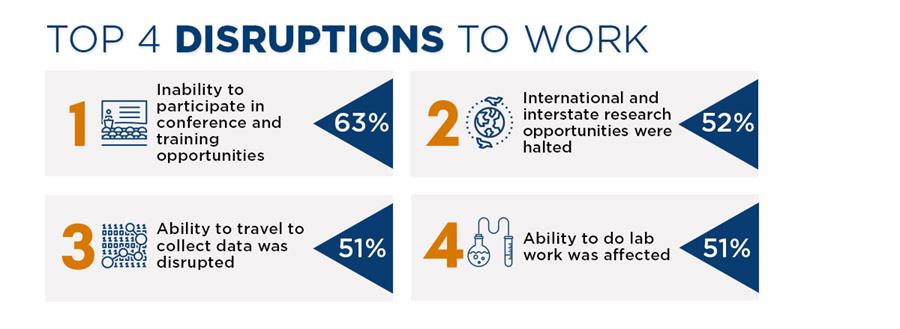
Contribute to the Space and Radio Science newsletter
If you would like to list your event or opportunity, or otherwise contribute to the next edition of the Space and Radio Science newsletter, please send content to icsu@science.org.au. Contributions will be published subject to approval by the National Committee for Space and Radio Science.
Subscribe
The National Committee provides this regular emailed newsletter containing updates from international scientific unions and committees and news related to the local scientific community, relevant funding opportunities, conferences and awards.
December 2020
Dear colleagues,
You are probably tired of hearing that 2020 was a very tough year and that you all handled the difficulties wonderfully. All those in the university sector know this is a gross understatement.
My notes remind me that early this year the National Committee for Space and Radio Science (NCSRS) was engaged in submissions and discussions regarding a four-digit field of research (FoR) code for space science. Other submissions this year dealt with the Australian Space Agency’s Moon to Mars program and the Department of Home Affairs consultations on protecting critical infrastructure, while early next year comments are due on a parliamentary enquiry into the space industry (see below).
The NCSRS has also been developing a brief history of Australian Radio Science. The scope and significance of radio science research is not widely appreciated, but the digital revolution and the ever-increasing appetite for bandwidth and seamless instantaneous connectivity are enabled by and depend on radio science R&D.
The NCSRS this year has also been focusing on development of the next decadal plan for space science, Australia’s Future in Space. This has now been distributed for consultation with key stakeholders. Public consultation including town-hall style discussion meetings will take place at the COSPAR conference, which will be held over 28 January to 4 February 2021. COSPAR will be the largest space science event in Australia for some years (although most of it will be a virtual meeting across multiple time zones). It will also feature a comprehensive education and outreach component that will hopefully provide the foundation for ongoing events into the future. Registration and other details for COSPAR are available at www.cospar2021.org
The possibilities and opportunities for the space science sector, and the R&D which drives it, are literally limitless. Space-derived services and capabilities are now integral to all aspects of society and our economy, as acknowledged for example through the Australian Government’s announcement of a National Manufacturing Priority in space. We now need a matching national space science priority!
The end of the year will bring the end of term for several members of the National Committee. The contributions of all members are very gratefully acknowledged. We are indebted to these members who give their time and enthusiasm to help foster the development and engagement of Australian Space and Radio Science. The NCSRS is currently seeking expressions of interest to join the committee; see below for further details.
Emeritus Professor Fred Menk
Chair, National Committee for Space and Radio Science
The Academy has had an interesting and eventful year, much akin to the stories of other organisations in 2020. At the beginning of the year, the heritage-listed Shine Dome and Ian Potter House sustained extensive damage from a severe hailstorm. Following this, Academy staff moved to a new office building but swiftly left to work from home as COVID-19 restrictions came into effect.
The Academy has since been working from home, holding meetings and events virtually. Repairs to Ian Potter House and the Shine Dome are well underway. The refurbished Shine Dome will sport a shiny new top and be far more energy efficient following works to repair the damage from January's hailstorm, which severely dented the Dome’s copper roof tiles and compromised the building’s integrity.
The Australian Academy of Science has committed to reducing its impact on climate change by working towards a net-zero emissions future for the Shine Dome.

The NCSRS is one of 22 National Committees of the Australian Academy of Science. It exists to foster these disciplines in Australia, to liaise with international scientific bodies and to advise the Council of the Academy on relevant matters. One of its main activities is to produce and oversee the implementation of a strategic plan for space science in Australia. The 2021 plan, Australia’s Future in Space, will be released for consultation at COSPAR 2021 in January.
NCSRS is made up of about eight members appointed by the Executive Committee of the Academy, plus observers. See the list of current members of the committee.
There are at least two vacancies on the NCSRS with terms beginning in early 2021 for a period of three years.
To make the process of selecting new members as open as possible, the NCSRS is calling for expressions of interest for nominees. The committee seeks membership representing a spread of institutions and specialisations, and is particularly keen to improve the gender balance and diversity of its membership.
The guidelines relating to membership can be summarised as follows:
Note that all appointments are made by the Academy’s Executive Committee on the basis of a nomination forwarded by the NCSRS Chair.
Nominations will be reviewed by a panel consisting of the NCSRS Chair, a representative of a suitable scientific organisation, and one Fellow of the Academy who is not an NCSRS member. This review panel (in consultation with the Academy's Secretary for Physical Sciences) will make a recommendation on the vacant positions, which will be forwarded to the Academy’s Executive Committee for approval.
Please apply using the application form before 5.00 pm AEDT on Friday 5 February 2021. Self-nominations are acceptable.
A survey conducted by the Academy’s Early- and Mid-Career Researcher Forum investigated the impact of COVID-19 on Australia’s early- and mid-career researcher (EMCR) workforce, and found significant effects on their mental health and productivity.
A report presenting the key findings of the survey and highlighting recommendations for relevant stakeholders in the STEM sector to support EMCRs during the pandemic has been published. Read the report (PDF).
The survey follows the publication of a report by the Rapid Research Information Forum that also found that women and early-career researchers are among those that will disproportionately experience negative impacts of the pandemic.

The House of Representatives Standing Committee on Industry, Innovation, Science and Resources has commenced an inquiry into the development of Australia’s space industry. The inquiry is chaired by former deputy prime minister Barnaby Joyce. Please feel free to develop your own submissions, or forward comments for inclusion in a submission by the NCSRS to nc@science.org.au. Submissions close 29 January 2021.
CSIRO’s Parkes radio telescope has been honoured with a traditional name chosen by Wiradjuri Elders and revealed at a local naming ceremony. The name is Murriyang, which represents the Skyworld where a prominent creator spirit of the Wiradjuri Dreaming, Biyaami (Baiame) lives. Smaller telescopes at CSIRO’s Parkes Observatory also received Wiradjuri names.
One of the most iconic and scientifically productive telescopes in the history of astronomy will close forever due to irreparable damage. The collapse of the telescope is covered in a Science article, discussing the end of the telescope’s 57-year history. A Nature article discusses the significance of the telescope and the mourning of the scientific community. A Slate article, Why I’m Mourning the Arecibo Telescope, offers a personal reflection on the importance of the telescope.
Australia is among the first partner countries to join NASA on international cooperation with the signing of the Artemis Accords. The Artemis Accords establish a set of principles that guide cooperation among nations in space exploration. The signing helps Australia advance space as a partner with NASA and international counterparts on the Artemis mission as we go forward to the Moon and then eventually to Mars.
The University of Adelaide has formally renamed the Space Research Centre in honour of the Australia’s first astronaut, Dr Andy Thomas, to become the Andy Thomas Centre for Space Resources. The centre connects the University of Adelaide’s specialist capabilities to global efforts in off-world exploration and habitation.
NASA has selected five proposals for concept studies of missions to help improve understanding of the dynamics of the Sun and the constantly changing space environment with which it interacts around Earth. Each of these proposals will receive $1.25 million to conduct a mission concept study, following which NASA will choose up to two proposals to go forward to launch.
A new paper in Science Advances reviews data from the Indian Space Research Organisation's Chandrayaan-1 orbiter, which discovered water ice and mapped out a variety of minerals while surveying the moon's surface in 2008, including the presence of hematite at the lunar poles. An article titled Researchers confused by moon’s case of rust overviews the findings.
Recent international research with Australian co-author Dr Katarina Miliijkovic from Curtin Space Science and Technology Centre expands on the decades of work by other scientists to provide insights as to how and why the Moon’s crust is magnetised. This research essentially ‘debunks’ one of the previous longstanding theories
The October 2020 issue of the SCOSTEP/PRESTO Newsletter (PDF) is now available. It includes updates and research stories from members, and upcoming events.
XXXIV General Assembly and Scientific Symposium (GASS) of the International Union of Radio Science (URSI) will be held over 28 August to 4 September at Sapienza Faculty of Engineering in Rome. The GASS of URSI are held at intervals of three years to review current research trends, present new discoveries and make plans for the future research and special projects in all areas of radio science. More information can be found on the URSI GASS 2021 website.
The 2022 meeting of the URSI Asia–Pacific Radio Science Conference (AP-RASC), will be held in Sydney.
© 2025 Australian Academy of Science